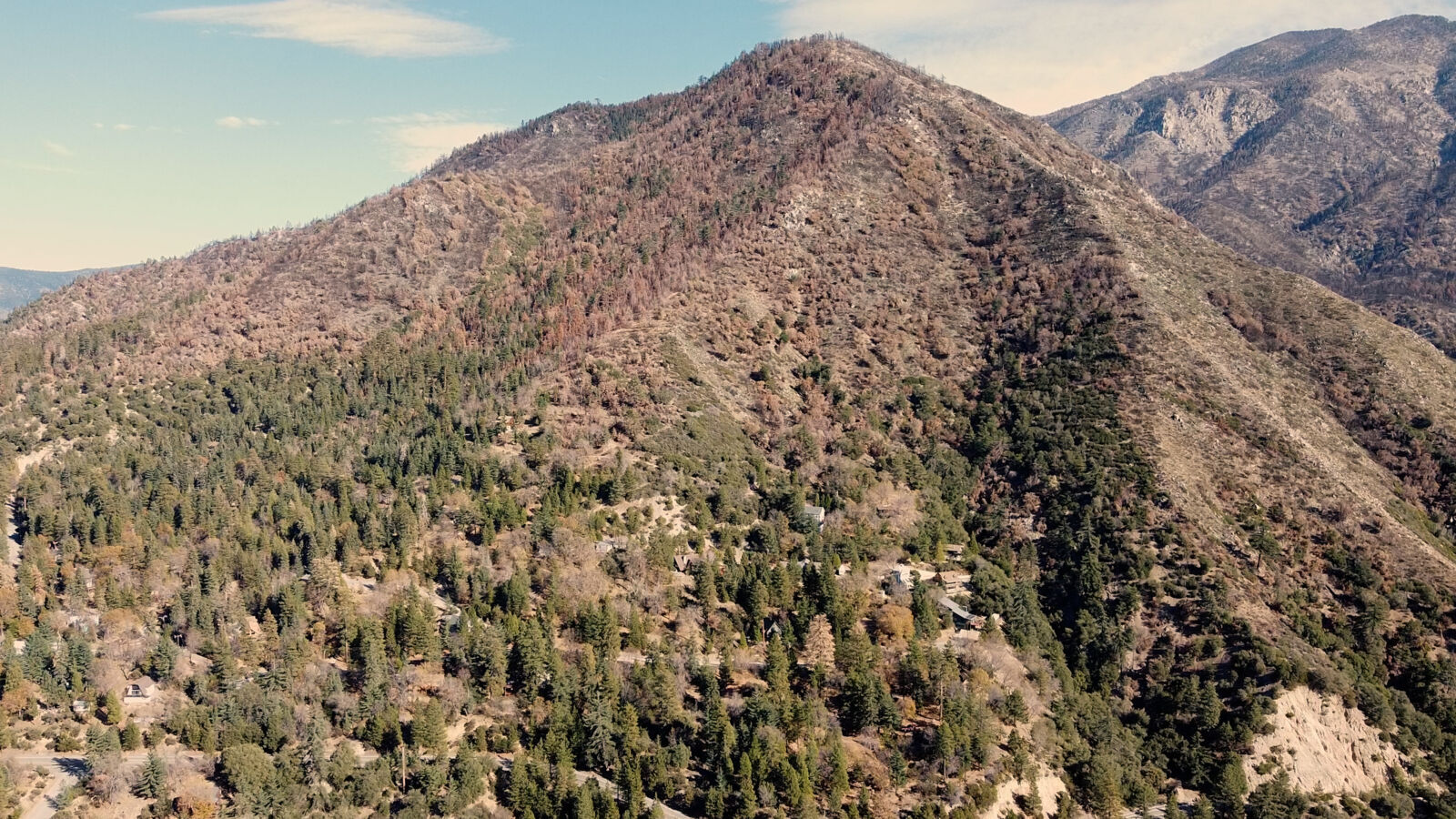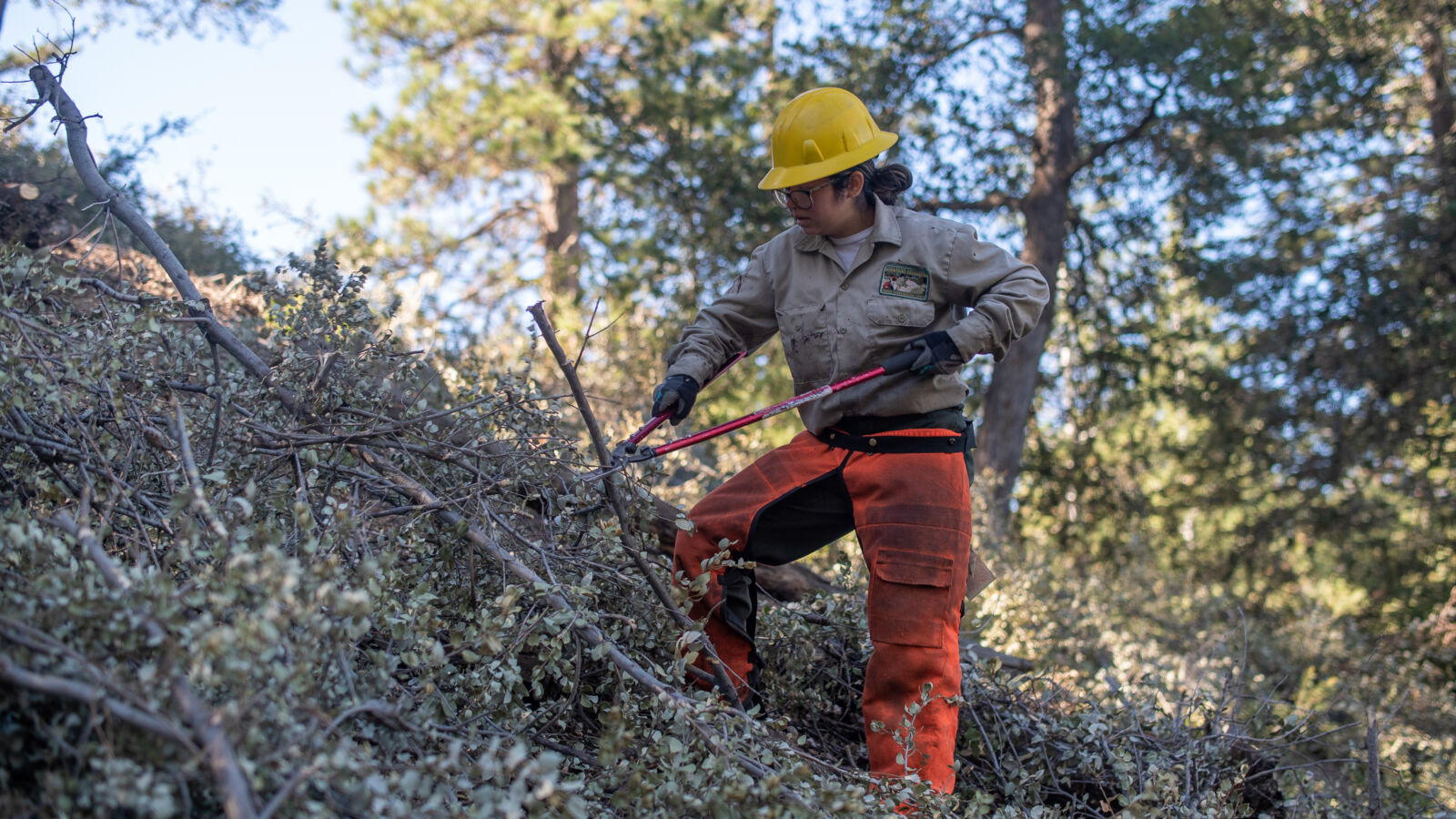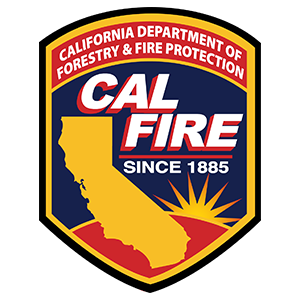The San Bernardino National Forest, located about 90 miles east of Los Angeles in Riverside and San Bernardino counties, is one of the most urban National Forests in the nation and attracts tens of thousands of visitors every year. It is also home to dozens of rural communities, beautiful lakes, and ski resorts.
While it is a much beloved National Forest, offering numerous recreation opportunities year-round and respite from the bustling cities of Southern California, the San Bernardino National Forest is also one of the most wildfire-prone National Forests in the country. The area’s arid climate, highly flammable vegetation, steep slopes, and seasonal Santa Ana winds enhance the risk of severe fires that can grow rapidly. Due to climate change, the fire season is also growing longer and more extreme.

Aerial image of the Angelus Oaks community and the 2020 El Dorado Fire burn scar. Photo by Brian Cavallaro.
Repeated large wildfires impact the Forest in many ways, including causing soil erosion, contributing to the introduction and spread of non-native and invasive plants, and reducing native plant and animal populations.
Due to the high level of public use, human wildfire ignition is also more common than in remote National Forests. The San Bernardino National Forest has experienced multiple large-scale wildfires over the last few decades, including the Grass Valley Fire in 2007, the Lake Fire in 2015, the Cranston Fire in 2018, and the El Dorado and Apple Fires in 2020. So far, in 2022, there have been two significant wildfires: the Radford and Fairview Fires.
These wildfires can threaten, damage, or even destroy the communities located in and around the San Bernardino National Forest, highlighting the need for urgent action to address the growing risk to communities.

Urban Conservation Corpsmember conducting brush removal for the Angelus Oaks project. Photo by Brian Cavallaro.
In 2021, the NFF partnered with the San Bernardino National Forest to manage multiple projects across the San Bernardino National Forest that will improve community wildfire safety and address post-fire restoration needs. Funding for the projects is provided by the California Department of Forestry and Fire Protection (CALFIRE), as part of the California Climate Investments (CCI) Program.
The projects include reducing fuel loads in the Grass Valley Fire area, replanting native trees in the Cranston Fire area, maintaining planted trees in the Lake Fire burn area through a process called ‘tree release’ where competing vegetation is cut back from seedlings to allow them to grow, prescribed burning in the Thomas Mountain area, and fuelbreak maintenance around the community of Angelus Oaks.
Tree release examples in reforested areas of the Lake Fire burn scar. Photo by the U.S. Forest Service.
These projects each carry benefits to both the National Forest and the communities that rely on them. Reforesting and tree release projects help restore watershed and habitat function. Fuel reduction work focuses on removing brush, invasive weeds, and excessive saplings. This decreases the amount of fuel on the landscape that can burn quickly and can cause fires to spread rapidly. Similarly, fuelbreak maintenance focuses on maintaining healthy forest cover while still removing dry brush and shrubs, and cutting back ‘ladder fuel,’ vegetation that grows too close to mature trees that could allow a wildfire to spread up into a mature forest’s canopy. Canopy fires are particularly dangerous as they are difficult to control. It is essential to prevent them around communities in the Wildland-Urban Interface (WUI), areas where the natural landscape transitions to manmade development.
So far, the NFF has completed initial rounds of tree release in the Cranston and Lake Fire burn areas as well as the fuelbreak maintenance in Angelus Oaks, thanks to hard work by contractors and local partners like the Urban Conservation Corps. Over the next three years, the NFF will continue to work with local partners and the US Forest Service to plant 25,000 trees in the Cranston Fire area, conduct additional tree release, and complete fuel reduction work in Grass Valley.
The NFF is excited to continue working with CALFIRE and the CCI Program, as well as Southern California Edison and donors to the Southern California Forest Fund, to support forest health and wildfire resilience in the San Bernardino National Forest. To support our work to promote wildfire resilience across Southern California, click here to learn about the Southern California Forest Fund.
More Information about the California Climate Investments Program
San Bernardino National Forest Post-Fire Restoration and Forest Health Project is part of the California Climate Investments, a statewide program that puts billions of Cap-and-Trade dollars to work reducing GHG emissions, strengthening the economy, and improving public health and the environment- particularly in disadvantaged communities. The Cap-and-Trade program also creates financial incentives for industries to invest in clean technologies and develop innovative ways to reduce pollution. California Climate Investments projects include affordable housing, renewable energy, public transportation, zero-emission vehicles, environmental restoration, more sustainable agriculture, recycling, and much more. At least 35 percent of these investments are located within and benefiting residents of disadvantaged communities, low-income communities, and low-income households, across California. For more information, visit the California Climate Investments website at www.caclimateinvestments.ca.gov.


Cover photo by Brian Cavallaro.
--------
Bringing people together has always been a superpower of the NFF. But we can’t do it without our supporters, and that includes you. Please consider making an unrestricted gift today so we can provide the absolute best collaborative services tomorrow. Simply click here. We – and all our partners – thank you!

